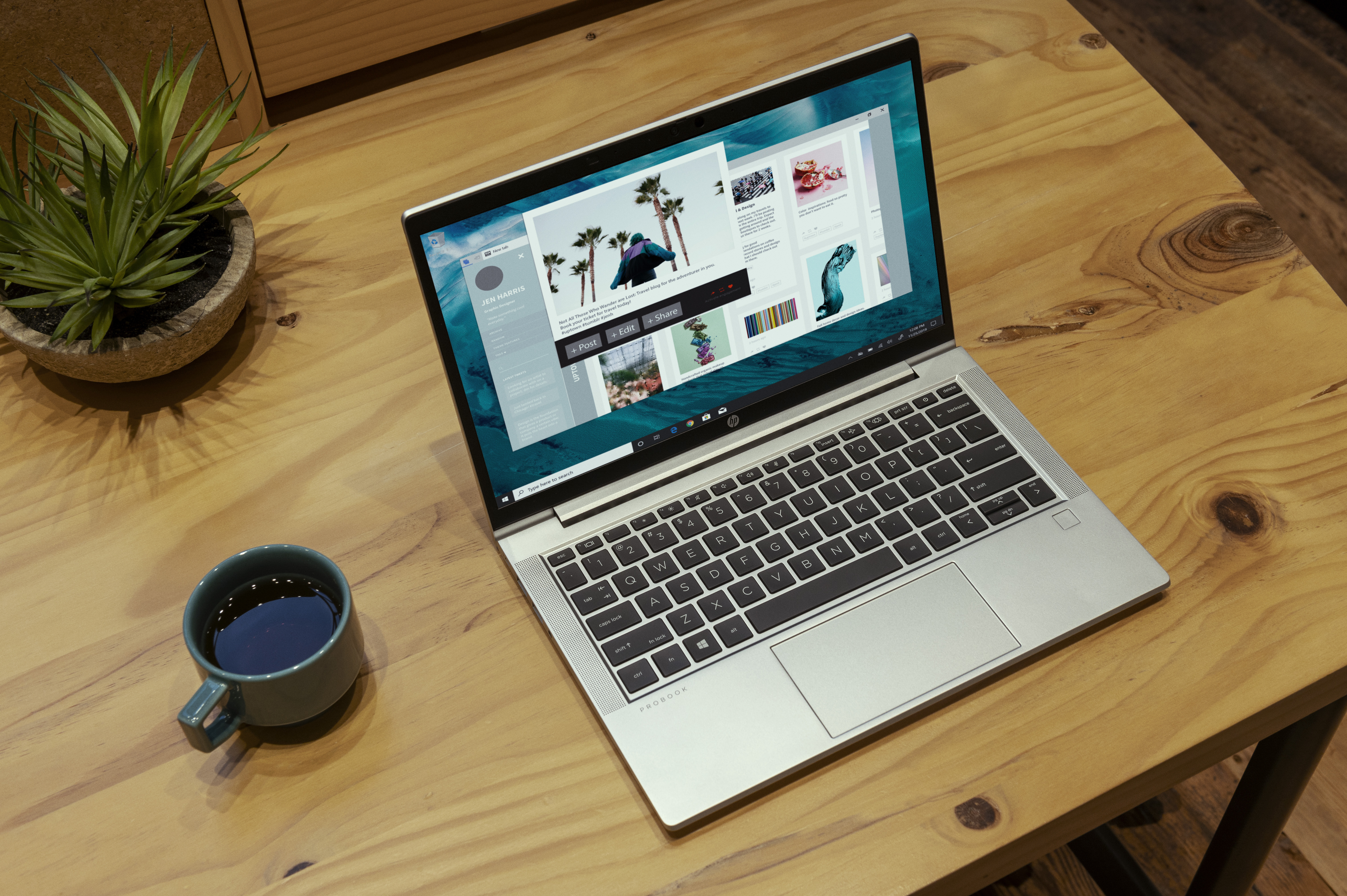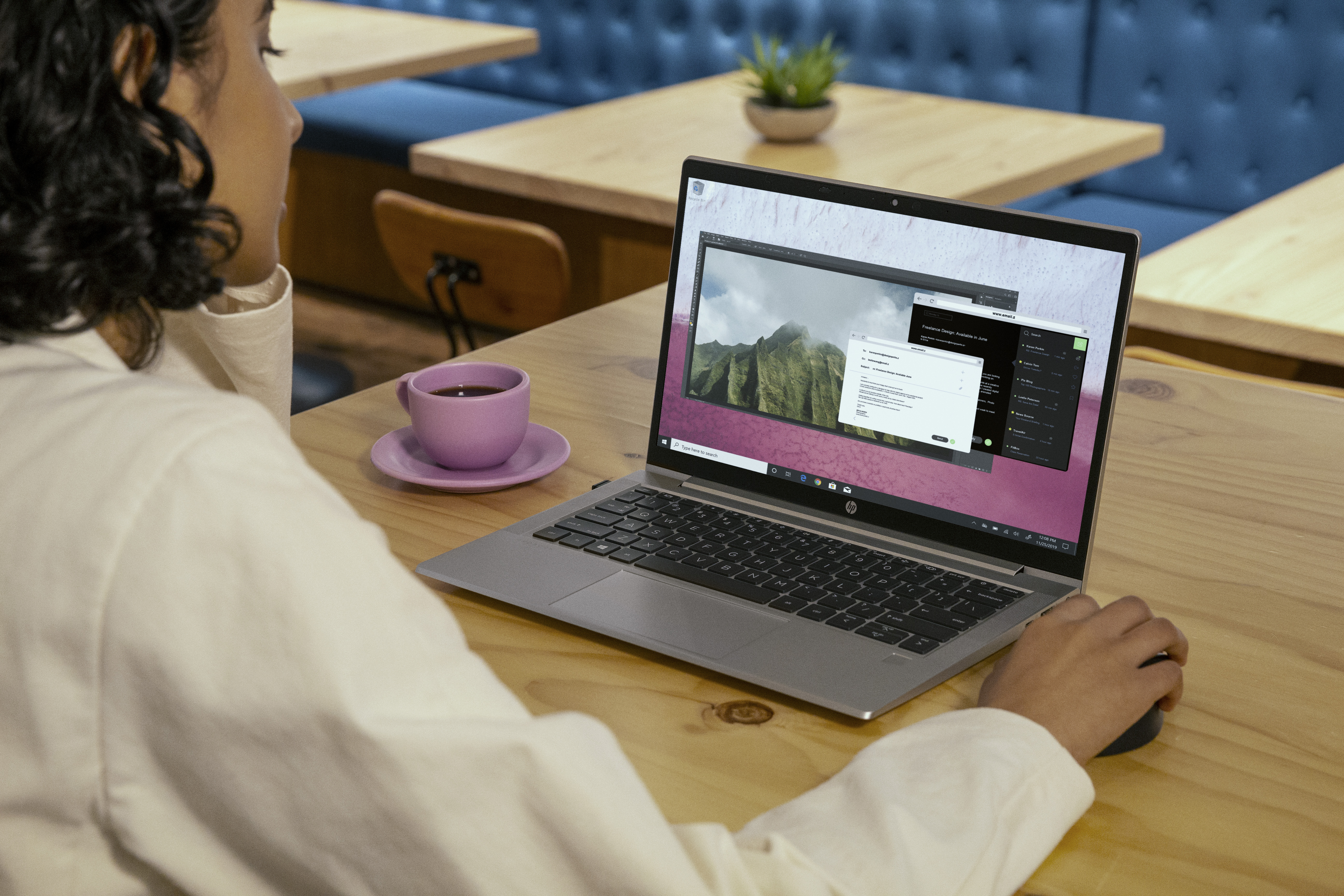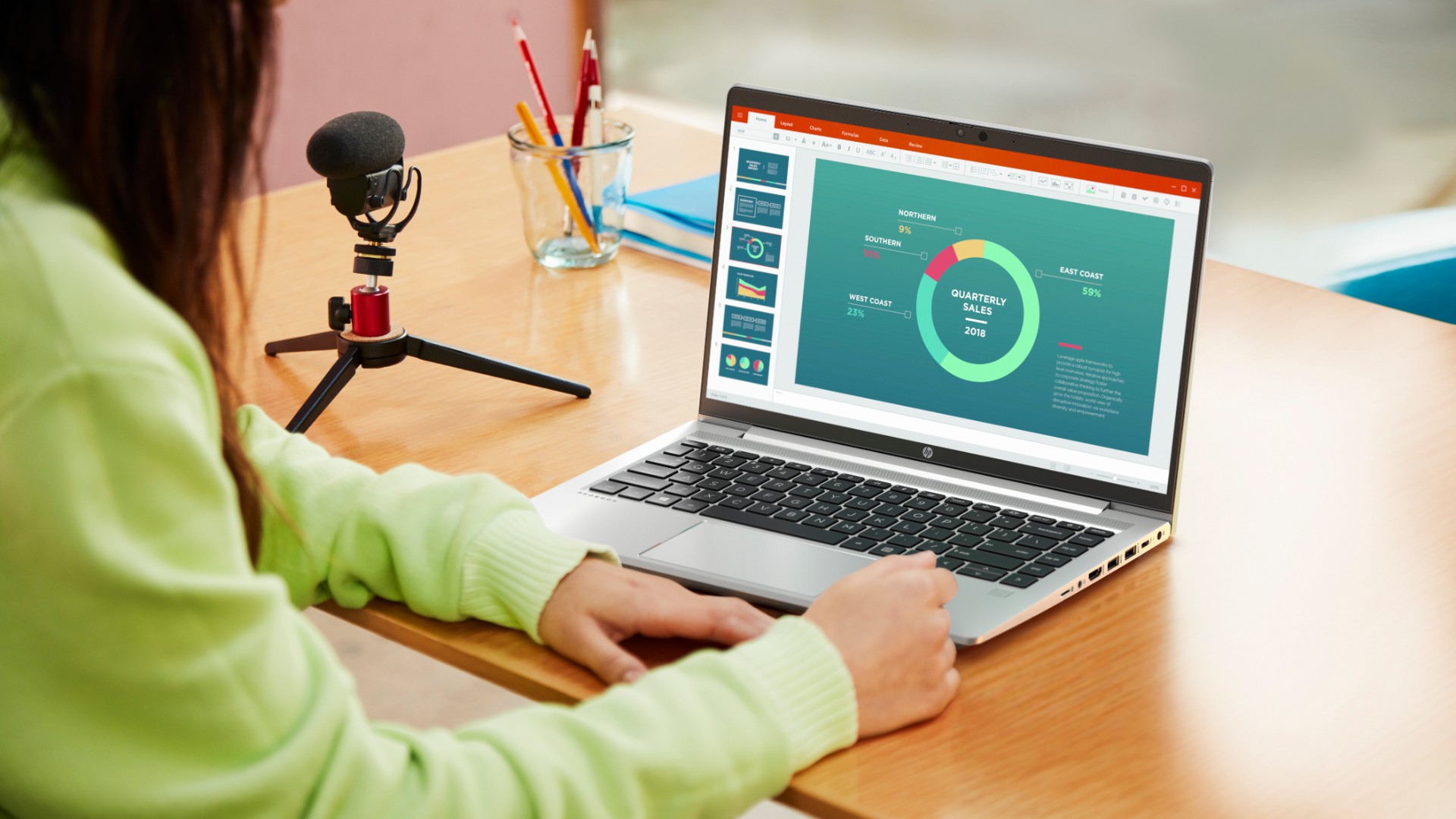HP's ProBook 635 Aero packs AMD Ryzen 4000 in a 2.2-pound chassis
It's the lightest AMD-based business laptop ever

Who knew the business laptop market would become so competitive so quickly? MSI just joined the fun while Asus and Acer caught our attention recently with the ExpertBook B9450 and TravelMate P6, respectively. These compelling new products for business users put pressure on the established brands. Not to be outdone, HP announced today three new ProBook models: the ProBook 635 Aero G7, ProBook 600 G8 and ProBook 400 G8.
Priced below the EliteBook line, these ProBooks are meant for small businesses or as cost-saving options for larger workforces. The goal is to ensure workers stay productive without breaking the bank of the company outfitting its staff. Below is a breakdown of the three new models so you can decide which one is right for your needs.
- Best business laptops in 2020
- Best HP Laptops in 2020
- Best 2-in-1 laptops in 2020
HP ProBook 635 Aero G7
The ProBook 635 Aero G7 has a lot going for it. The first, its Ryzen 4000 Pro CPUs, are courtesy of AMD. I'm already inclined to consider the available CPU options as an advantage for the ProBook 635 Aero G7 because our testing shows that AMD's mobile chips are the most capable on the market (at least, for now).
In the case of the ProBook 635 Aero G7, you can choose from all three flavors in the AMD Ryzen 7 4700U, Ryzen 5 4500U and Ryzen 3 4300U. For the best performance, this ProBook 635 can be upgraded with up to 32GB of RAM and a 1TB PCIe NVMe M.2 SSD. The laptop has a 53Whr battery that hasn't been rated yet.

Those components are housed within a portable chassis. At 0.7 inches, the ProBook 635 isn't the thinnest laptop but it weighs only 2.2 pounds thanks to its magnesium alloy material. That slightly chunkier build allows for more ports, including a USB-C, two USB Type-A inputs, an HDMI and a headphone/mic jack.
There are plenty of security options, although most are optional. You can configure the ProBook with a fingerprint sensor or HP's Sure View Reflect panel (which has a built-in privacy filter). Standard on all models is a TPM 2.0 encryption chip.
There are three display options, all of which are 13.3-inch, 1080p panels. The first has a Sure View integrated privacy screen that brings the brightness up to 1000 nits. Most people will go for the middle option, a standard non-touch anti-glare screen with a generous 400 nits of brightness and 72% NTSC color coverage. The last option, which I suspect will be the cheapest, gets only up to 250 nits of brightness and covers only 45% of the NTSC gamut.
Stay in the know with Laptop Mag
Get our in-depth reviews, helpful tips, great deals, and the biggest news stories delivered to your inbox.
HP ProBook 635 Aero G7 will be available in November 2020. Pricing has not yet been announced.
HP ProBook 600 G8 and ProBook 400 G8
Also revealed today are new ProBook 600 G8 and ProBook 400 G8 models with Intel 11th Gen Tiger Lake CPUs. These models don't come with Intel's vPro platform for remote manageability, which is something to keep in mind if you're deploying a large fleet.
Both business laptops come in 13-inch, 14-inch and 15.6-inch versions denoted by the second letter in their models. For example, the ProBook 630 has a 13-inch display while the ProBook 640 has a 14-inch panel (naturally, the ProBook 650 has a 15.6-inch panel). Starting with the ProBook 600 series, each of these laptops is made of aluminum and has relatively thin bezels for an 80% screen-to-body ratio.

The 13.3-inch ProBook 630 G8 is considerably heavier than the ProBook 635, weighing in at 2.8 pounds despite being the same 0.7 inches thick. The ProBook 640 is 0.8 inches thick and 3 pounds while the ProBook 650 is 0.8 inches thick and 3.8 pounds.
The 600 series can be outfit with an Intel Core i7-1165G7 CPU with Iris Xe graphics, a Core i5-1135G7 CPU with Iris Xe graphics or a Core i3-1115G4 CPU with UHD Graphics, regardless of the screen size. You can upgrade these notebooks (even the 13-ich model) to have up to 64GB of RAM and up to a 512GB PCIe NVMe M.2 SSD.
The only notable difference between the three screen sizes is that the 14-inch ProBook 640 and 15.6-inch ProBook 650 come with an Nvidia GeForce MX450 discrete GPU whereas the 13.3-inch is stuck with integrated graphics.

There are five screen options for the ProBook 600 G8 series, all of which are identical apart from their size. First up is a 1080p panel with the Sure View privacy filter for up to 1000 nits of brightness. The second option is a 1080p anti-glare touchscreen with only 250 nits of brightness and 45% NTSC coverage.
The third is my favorite option: a low-power 1080p panel with 400 nits of brightness and 72% NTSC coverage. If you don't need good picture quality, the fourth option is a non-touch version of the aforementioned touchscreen. The last option is hardly worth mentioning; please don't force your staff to use a 1366 x 768-pixel panel, especially if you're going big on screen size.

Not a lot separates the ProBook 400 series from the 600 models. They are also made of aluminum except that the 87% screen-to-body ratio on the 400s means slimmer display bezels.
You'd think the lower the number, the less powerful. But in this case, the ProBook 400 models can be equipped with the same 11th Gen Intel Core i3/Core i5/Core i7 CPUs as the ProBook 600 versions.
Phillip Tracy is the assistant managing editor at Laptop Mag where he reviews laptops, phones and other gadgets while covering the latest industry news. After graduating with a journalism degree from the University of Texas at Austin, Phillip became a tech reporter at the Daily Dot. There, he wrote reviews for a range of gadgets and covered everything from social media trends to cybersecurity. Prior to that, he wrote for RCR Wireless News covering 5G and IoT. When he's not tinkering with devices, you can find Phillip playing video games, reading, traveling or watching soccer.

